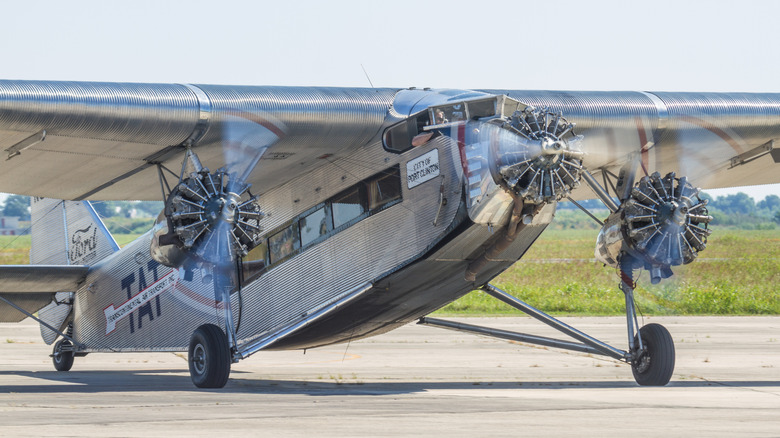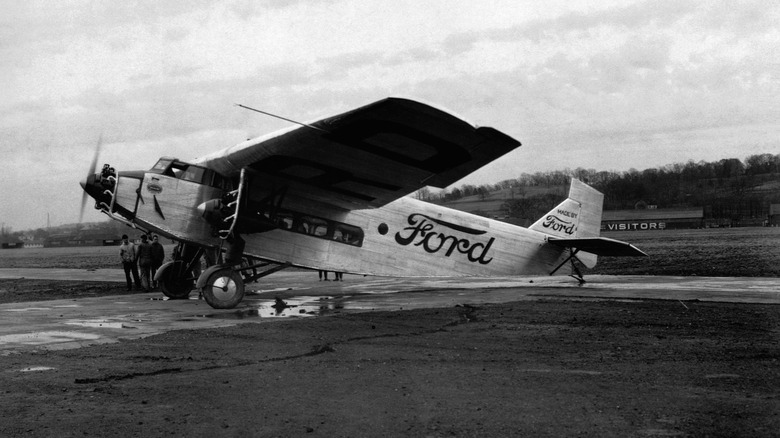Ford Changed Flying Forever With This Popular Plane, Then Quit - Here's Why
Believe it or not, automobiles aren't the only thing Ford has built over the years. When Ford's Tri-Motor airplane first took flight on August 2, 1926, it was the largest civilian plane in the United States. It was one of the first made entirely of metal, and was the very first built specifically to carry passengers instead of mail. The plane was equipped with a trio of Wright J6-9 engines that produced 300 hp, allowing it to reach speeds of 150 mph.
The Tri-Motor was key for early American airlines, establishing the first domestic routes across the continental U.S. and revolutionizing air transportation worldwide. It played a crucial role in gaining the public's trust in commercial aviation. Between 1926 and 1933, the Tri-Motor established several aviation firsts, including the use of an experimental radio beacon navigation system and air-to-ground communications technology, which finally allowed real-time communication with pilots in the air.
By 1929, most major carriers (i.e., American Airlines, Pan American World Airways, Trans World Airlines, and United Airlines) in the U.S. and all three branches of the military were using the Tri-Motor. But just as quickly as it had risen to such lofty heights, Ford's venture into the wild blue yonder all but faded. Mere months after Ford's plane had reached its zenith, a "Black Thursday" in October of 1929 ushered in the Great Depression. This wasn't the only reason the Tri-Motor plummeted to Earth, though. Ford's inability to keep up with technological advancements in aviation, combined with patent infringement claims from Germany, eventually grounded the Tri-Motor.
Ford had as big of an impact in the air as he did on the road
William Bushnell Stout was a Minnesota engineer who sought to revolutionize air travel by replacing wooden-framed planes with all-metal, multi-engine aircraft. He had the requisite skill, but lacked the funds to create his vision, so he went around asking Detroit's elite industrialists for $1,000 each. Ford wanted to invest much more, but Stout refused. Undeterred, Ford built the first modern airport (Ford Airport) in 1924 in Dearborn, Michigan, for Stout. Next to it was open land for Stout to build his Metal Airplane Company factory. A year later, Ford bought the company outright.
Initially, the sky was the limit, with 86 Tri-Motors built in 1929. However, when the Great Depression hit later that year, things took a drastic dive, and by 1932, Ford sold only three planes. The company closed in 1933, having sold just 199. According to Ford Bryan's book "Beyond The Model T," the Tri-Motor's sales team blamed the Tri-Motor's failure squarely on Ford not wanting to update the plane's design or engines. For context, Boeing's sleek 247 could cruise at 189 mph, making the Tri-Motor look ancient by comparison.
Then came the patent infringement claims from German aircraft maker Junkers, which accused Ford of stealing the corrugated aluminum skin look it had long used. Junkers stopped Ford from exporting the Tri-Motor to Europe and, just like Icarus flying too close to the sun with wings made of wax, the Tin Goose came crashing down. However, if you can find one in the wild today, it's worth a fortune.

